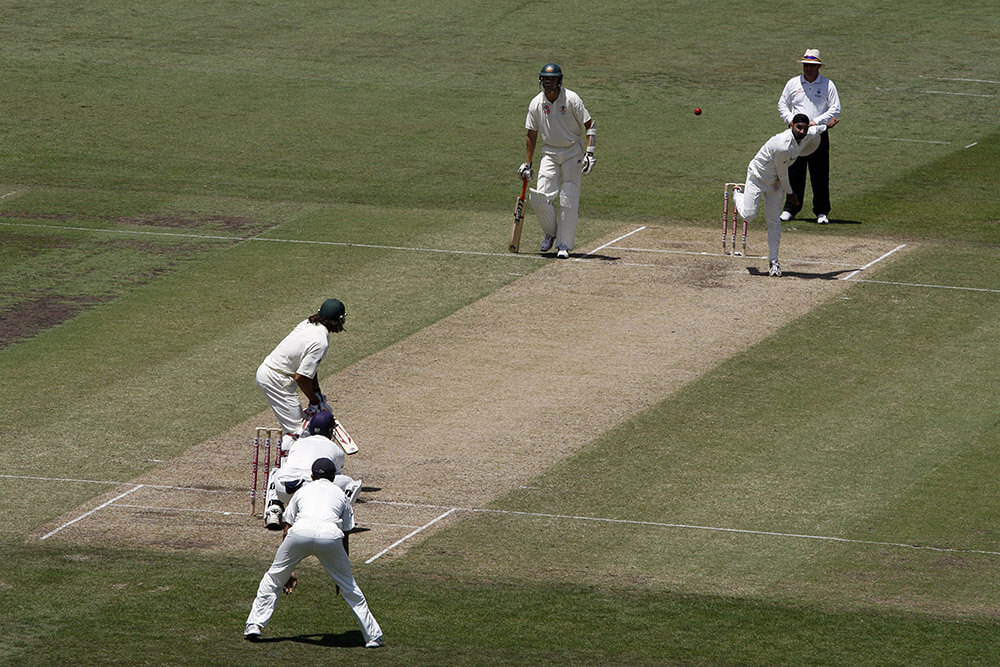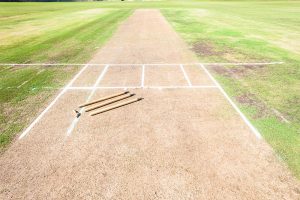How to Become an Umpire in Cricket

Often Targeted by Losing Teams
">International Recognition">
The road to becoming an umpire begins by joining a local cricket association. The association will have some requirements that prospective umpires must satisfy. Such requirements usually include enrolling in umpiring courses and attending in-person training sessions before you can get certified. You would need to pass the association’s umpiring test before you can apply for the association’s membership that would allow you to umpire matches that are overseen by the association.
Contents
How to Become an Umpire in Cricket: Skills and Requirements
There are courses that cover umpiring basics, including key laws and basic umpiring requirements on the field of play. Such courses are usually available free of charge and are useful to you if you wish to umpire matches at a recreational level or at matches that no umpires have been appointed to officiate.
Contents
To get to the next stage, you would need to attend a more advanced course that will help you learn how to manage matches and work as a team with a colleague. Before you can become an accredited umpire, you would need to take an exam that will test your level of knowledge.
An important part of umpiring is the use of hand movements to signal what is going on in a game, such as no balls, wides, fours, sixes, free hits and so on. The precision and correctness of your call will add to your competence as an umpire, as spectators who are out of earshot may not hear an umpire’s call and would rely on the signals.
Attending a lot of matches and observing other umpires is a necessary part of training aimed at becoming a good umpire. You can begin your practical training by becoming a member of an umpires’ association in your local area and once you have gained more competence, you can aspire to join worldwide umpires’ associations. Being a member of an association can get you hired as an umpire though the process of getting noticed and hired could take years.
The skills needed to become an umpire can be summarised as follows: thorough knowledge of the 42 Laws of Cricket, in-depth understanding of the game, the ability to make decisions spontaneously and to manage people as well as to stay calm and unruffled under any circumstances.
We must also highlight the physical form aspects of umpiring. The ICC conducts umpiring courses in which they test the hearing ability, eyesight and fitness of prospective umpires. An individual who wishes to become an umpire must do a lot of physical training as they must stand for six to eight hours continually on the field of play. There is much pressure on the neck and back, so building strength in the respective body areas is crucial.
Mental fitness is also a very important aspect of umpiring. An umpire must be mentally very strong and extremely patient. Above everything else, an umpire must be fair and impartial no matter the circumstances.
How to How to Become a Cricket Umpire in India
as several states, each with its own sports body, as, for instance, the Delhi and District Cricket Association (DDCA) that oversees matters relating to cricket in the state of Delhi. The state bodies conduct exams on the umpiring theory that prospective umpires are required to pass.
A person who passes the exam conducted by a state body will become eligible to take exams conducted by the Board of Control for Cricket in India (BCCI) after he/she has been endorsed as a candidate for the exam by the cricket association in his/her state.
Prospective candidates seeking to take the exams conducted by the BCCI can get information about the date and location of the exams by staying in touch with the convening committee of the cricket associations of their respective states.
The BCCI conducts two levels of exams. Once a candidate has cleared both levels, he/she can join the BCCI umpires’ panel and become eligible to umpire games at the highest level. If you wish to become an international umpire from India, the BCCI must endorse your candidature to join the ICC’s panel of umpires.
How to BecoHow to Become a Cricket Umpire in Australia
cket Australia offers two levels of accreditation programs for prospective umpires. The first is called the Community Officiating Accreditation Program. This is an entry-level course divided into two parts. The first is a knowledge-based component that you can complete online. The second is a practical component that covers aspects of the on-field umpiring technique and teaches how to apply the knowledge you have gained in the first part of the course.
Before a participant can gain accreditation, he/she must undergo an on-field assessment in a match environment. This level is usually intended to train and educate individuals trying for the first time to become cricket umpires, teachers who need to umpire school tournaments, parents or others who may have to officiate in children’s matches.
Those who wish to umpire matches in competitions overseen by state cricket associations must complete the second level of accreditation which is called the Representative Official Level Two Accreditation. Even experienced umpires may enroll in this program in order to update their knowledge. This level involves a series of workshops in which the umpiring skills and competencies required are explored. The workshops are followed by the on-field assessments to judge whether the participants can apply the knowledge and skills learned in an actual match situation.
How to BecomeHow to Become a Cricket Umpire in Pakistan
ire to become umpires in Pakistan must pass tests like those administered in India and Australia before they can be accredited to officiate in games. The Pakistan Cricket Board (PCB) conducts Panel One and Panel Two tests. Back in 2003, PCB announced training courses aimed at grooming candidates to officiate in cricket matches in the country. They named seven regional centres – Peshawar, Lahore, Karachi, Larkana, Abbottabad, Islamabad, and Quetta – to provide grassroots-level training that would be overseen by a National Umpiring Council set up by the PCB. In the first batch in 2003, as many as 405 candidates were reported to have been short-listed by their local associations to undergo training in these courses.
Where to StudyWhere to Study
country, the respective cricket board conducts or oversees the conduct of classes to train and educate umpires. For instance, in India, umpiring classes are conducted by the Board of Control for Cricket in India (BCCI) and a person nominated by his/her state association can attend the classes. Likewise, in England, the ECB (English Cricket Board) has several levels of classes. The ICC conducts refresher courses that international umpires attend twice a year.
Responsibilities Responsibilities and Schedule
cisions must be made in a cricket match – these are an umpire’s responsibility. Umpires must ensure strict adherence to the Laws of cricket by individual players. They must also ensure that the match is conducted according to the rules.
Before a MatchBefore a Match
’s duties begin even before a match begins. An inspection of the pitch must be followed by ensuring that all the equipment is completely in order and that the markings of the boundaries are done correctly. Then comes a meeting with the teams’ captains, wherein the details of the teams are checked and the hours of play discussed, including when breaks for food and drink will take place. The umpires will also dwell upon the rules of play before they allow the captains to toss to decide which side will bowl or bat first.
How Many UmpiresHow Many Umpires
are officiated by two umpires on the field of play. At the start of an over, there will be an umpire behind the bowler’s stumps, while a second umpire will stand at square leg to the left of the batsman. In an international match, there will be a third umpire in addition to the two on the field. His job is to make a final decision when the umpires on the field are not certain of which decision to make and a replay may have to be resorted to. The laws of the modern-day game allow players in international matches to appeal against a decision made by an on-field official, in which case the third umpire must review the decision and announce his verdict.
Umpiring Decisions<Umpiring Decisions
ons on the game, umpires must ensure fair play. They must also regulate overs – six balls of a set bowled from one end – and change ends after every over. The number of runs admissible after a batsman hits a ball, whether a ball bowled by a bowler is legitimate, whether a batsman is out – these are some of the decisions on which the on-field umpire must rule. These decisions will reflect the position on the pitch as it exists at the time. For instance, the umpire will be alert to the possibility that a ball delivered by a bowler is illegitimate and call and signal a no-ball or a wide. He may rule whether a ball diverted by a batsman by using his leg is likely to have hit the wicket if not diverted so, in which case the umpire will declare the batsman out leg before wicket (lbw). The leg umpire will be alert to the possibility of a ball hitting the stumps before a batsman can get back to the wicket and rule the batsman out run out or stumped. At the end of every over, the umpires will switch positions.
Calls and SignalsCalls and Signals
ong>follow up on a decision by shouting out a call and making a hand signal in order to communicate his judgment. This is useful to scorers who are sitting off-field and may, hence, not be able to follow every detail of the game as it transpires. Thanks to the umpire’s signal, both teams may become aware of the course of play.
Need for TrainingNeed for Training
horough understanding of the game’s rules, it would be impossible for an umpire to officiate in a match effectively. Management and communication skills are required assets that can help an umpire to manage the players. The ability to make quick decisions and stay unruffled in pressure situations will serve an umpire well. While a short training course may suffice the need of an amateur umpire, a more intensive program could be needed by professional umpires.
Pros and Cons of BeinPros and Cons of Being an Umpire in International Cricket
ion for the game will recognise the many advantages inherent in becoming an umpire.
Pros
InternaPros
ition
Responsibilities and Schedule
cisions must be made in a cricket match – these are an umpire’s responsibility. Umpires must ensure strict adherence to the Laws of cricket by individual players. They must also ensure that the match is conducted according to the rules.Before a MatchBefore a Match
’s duties begin even before a match begins. An inspection of the pitch must be followed by ensuring that all the equipment is completely in order and that the markings of the boundaries are done correctly. Then comes a meeting with the teams’ captains, wherein the details of the teams are checked and the hours of play discussed, including when breaks for food and drink will take place. The umpires will also dwell upon the rules of play before they allow the captains to toss to decide which side will bowl or bat first.How Many UmpiresHow Many Umpires
are officiated by two umpires on the field of play. At the start of an over, there will be an umpire behind the bowler’s stumps, while a second umpire will stand at square leg to the left of the batsman. In an international match, there will be a third umpire in addition to the two on the field. His job is to make a final decision when the umpires on the field are not certain of which decision to make and a replay may have to be resorted to. The laws of the modern-day game allow players in international matches to appeal against a decision made by an on-field official, in which case the third umpire must review the decision and announce his verdict.Umpiring Decisions<Umpiring Decisions
ons on the game, umpires must ensure fair play. They must also regulate overs – six balls of a set bowled from one end – and change ends after every over. The number of runs admissible after a batsman hits a ball, whether a ball bowled by a bowler is legitimate, whether a batsman is out – these are some of the decisions on which the on-field umpire must rule. These decisions will reflect the position on the pitch as it exists at the time. For instance, the umpire will be alert to the possibility that a ball delivered by a bowler is illegitimate and call and signal a no-ball or a wide. He may rule whether a ball diverted by a batsman by using his leg is likely to have hit the wicket if not diverted so, in which case the umpire will declare the batsman out leg before wicket (lbw). The leg umpire will be alert to the possibility of a ball hitting the stumps before a batsman can get back to the wicket and rule the batsman out run out or stumped. At the end of every over, the umpires will switch positions.
Calls and SignalsCalls and Signals
ong>follow up on a decision by shouting out a call and making a hand signal in order to communicate his judgment. This is useful to scorers who are sitting off-field and may, hence, not be able to follow every detail of the game as it transpires. Thanks to the umpire’s signal, both teams may become aware of the course of play.
Need for TrainingNeed for Training
horough understanding of the game’s rules, it would be impossible for an umpire to officiate in a match effectively. Management and communication skills are required assets that can help an umpire to manage the players. The ability to make quick decisions and stay unruffled in pressure situations will serve an umpire well. While a short training course may suffice the need of an amateur umpire, a more intensive program could be needed by professional umpires.
Pros and Cons of BeinPros and Cons of Being an Umpire in International Cricket
ion for the game will recognise the many advantages inherent in becoming an umpire.
Pros
InternaPros
ition
Pros and Cons of Being an Umpire in International Cricket
ion for the game will recognise the many advantages inherent in becoming an umpire.Pros
InternaPros
ition
A good umpire can become almost as well known as a player. Also, it’s a matter of pride for the fans in the country which the umpire comes from. For instance, Pakistani umpire Aleem Dar is a celebrity in his country, especially after being named by the ICC as the best umpire of the year in three successive years.
Lucrative Career OptionLucrative Career Option
e of Simon Taufel of South Africa reportedly earned in excess of $100,000 yearly during his professional career. Even for those who wish to pursue umpiring on a part-time basis, the profession can help them to enjoy an additional steady stream of income.
Opportunity for PlayersOpportunity for Players to Follow their Passion after Retirement
s the game after retirement can go on a nostalgia trip by pursuing umpiring careers. With their previous experience of the game, such players could become competent umpires and find a sense of purpose in their lives.
Cons
Often TarCons
ng Teams
Opportunity for Players to Follow their Passion after Retirement
s the game after retirement can go on a nostalgia trip by pursuing umpiring careers. With their previous experience of the game, such players could become competent umpires and find a sense of purpose in their lives.Cons
Often TarCons
ng Teams
In a highly competitive sport, frustrated fans of losing teams often vent their frustrations on umpires whom they choose to blame for the defeat of their favourite teams. A single wrong decision can often ruin a good umpiring career.





